
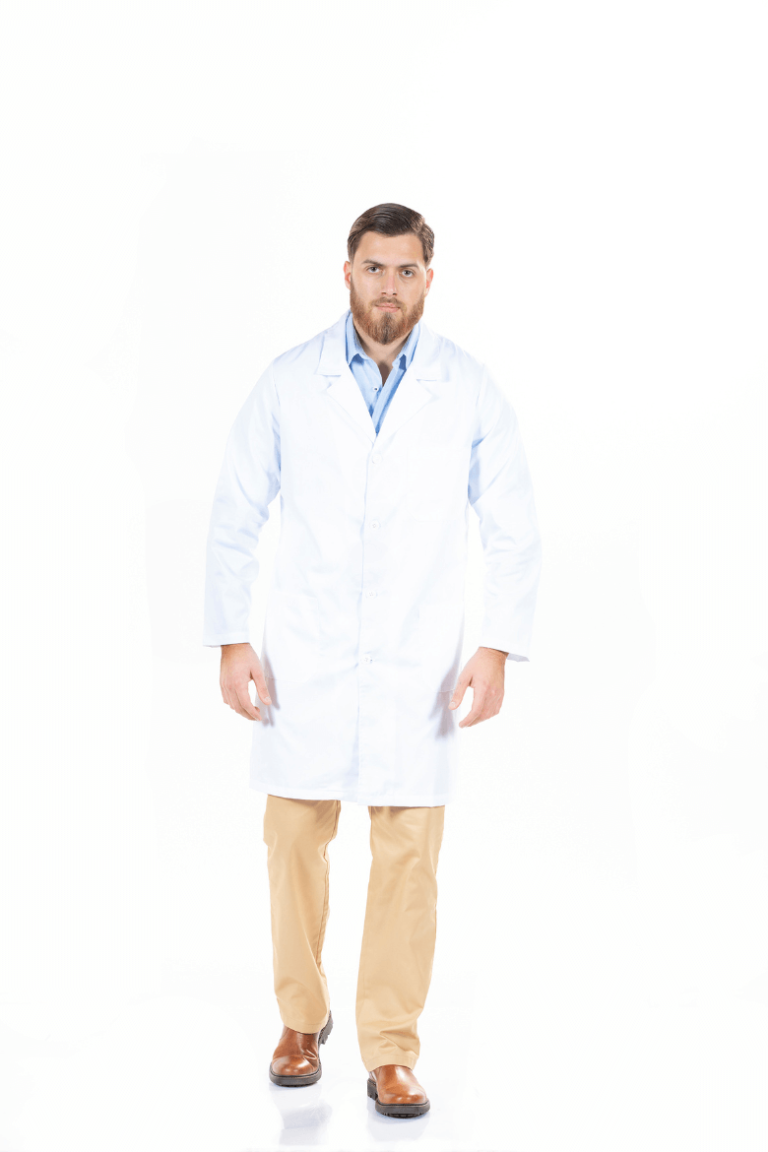


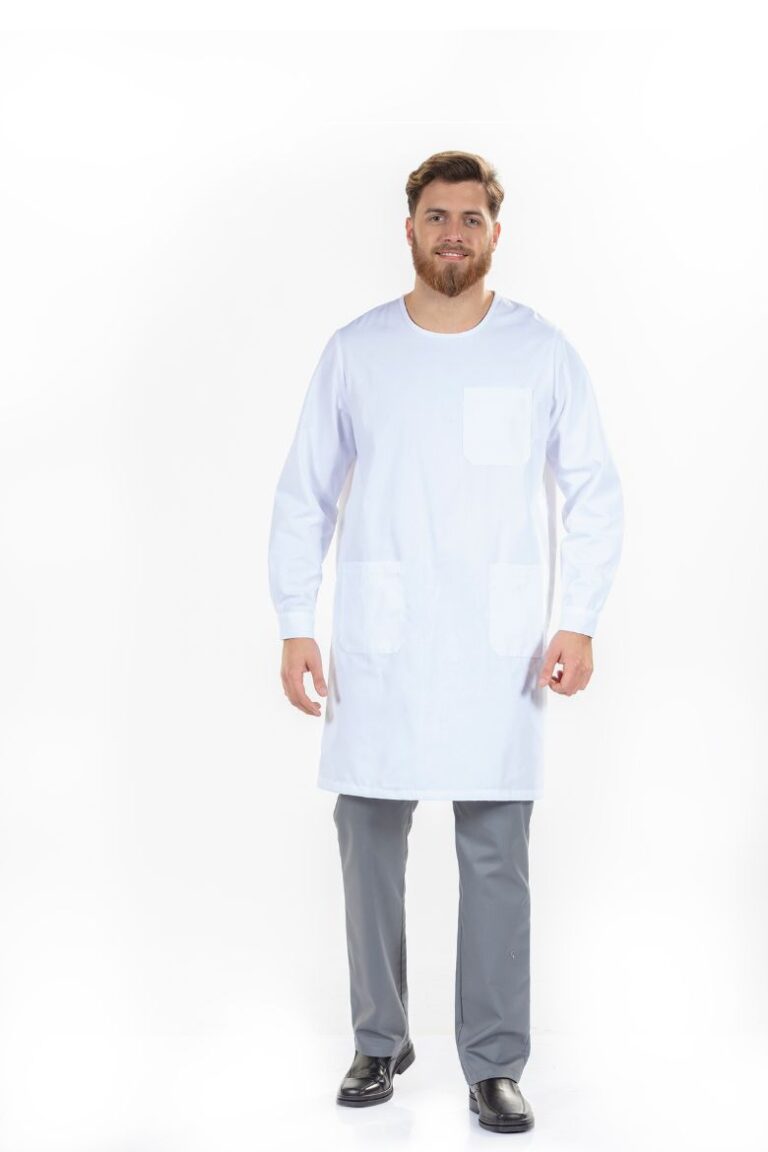

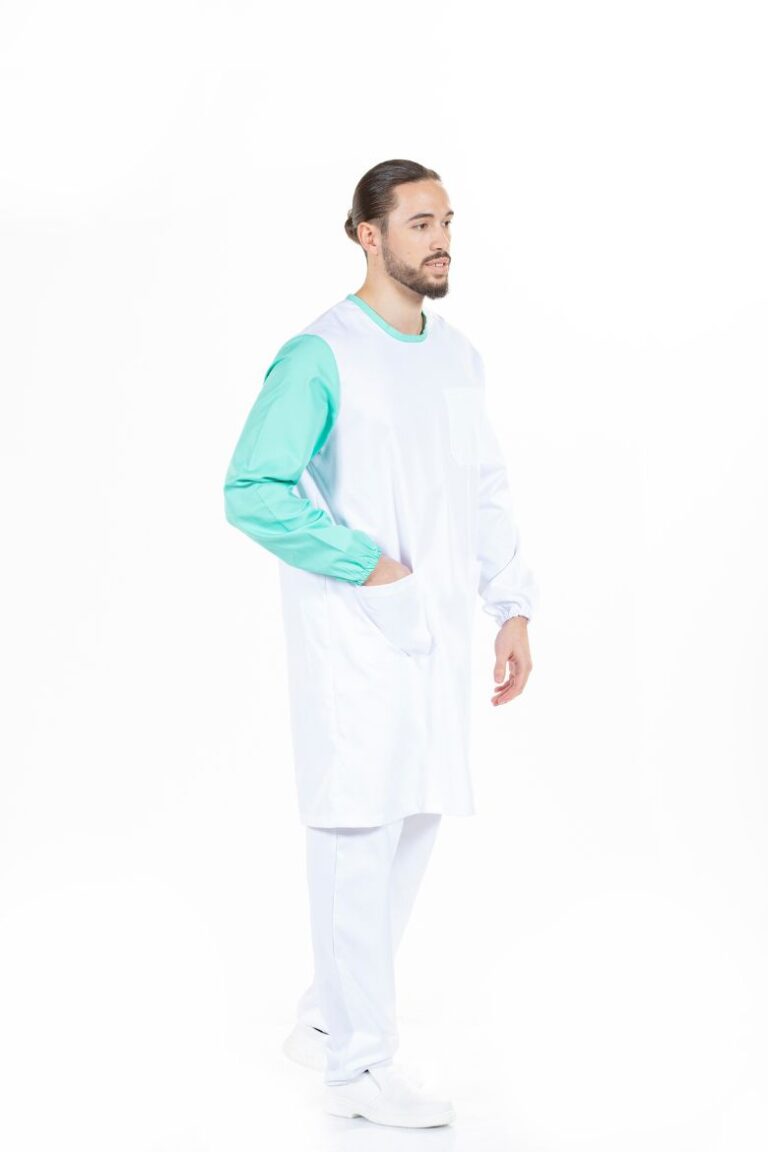


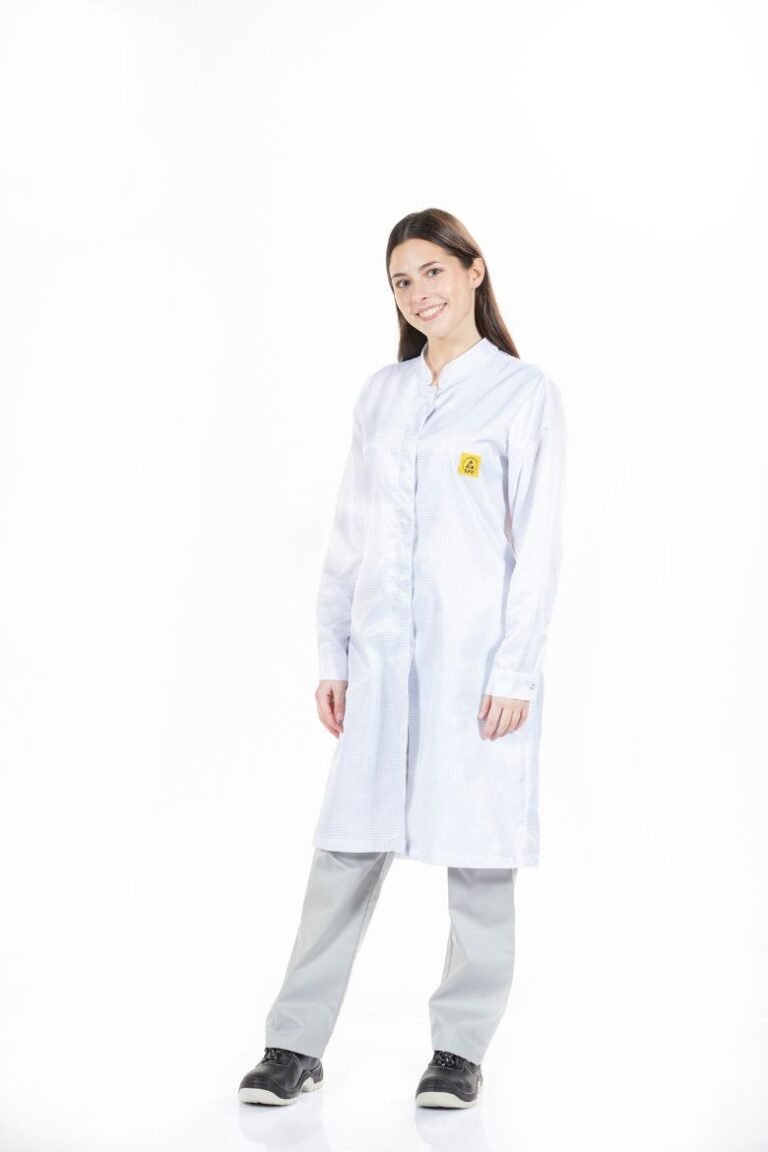
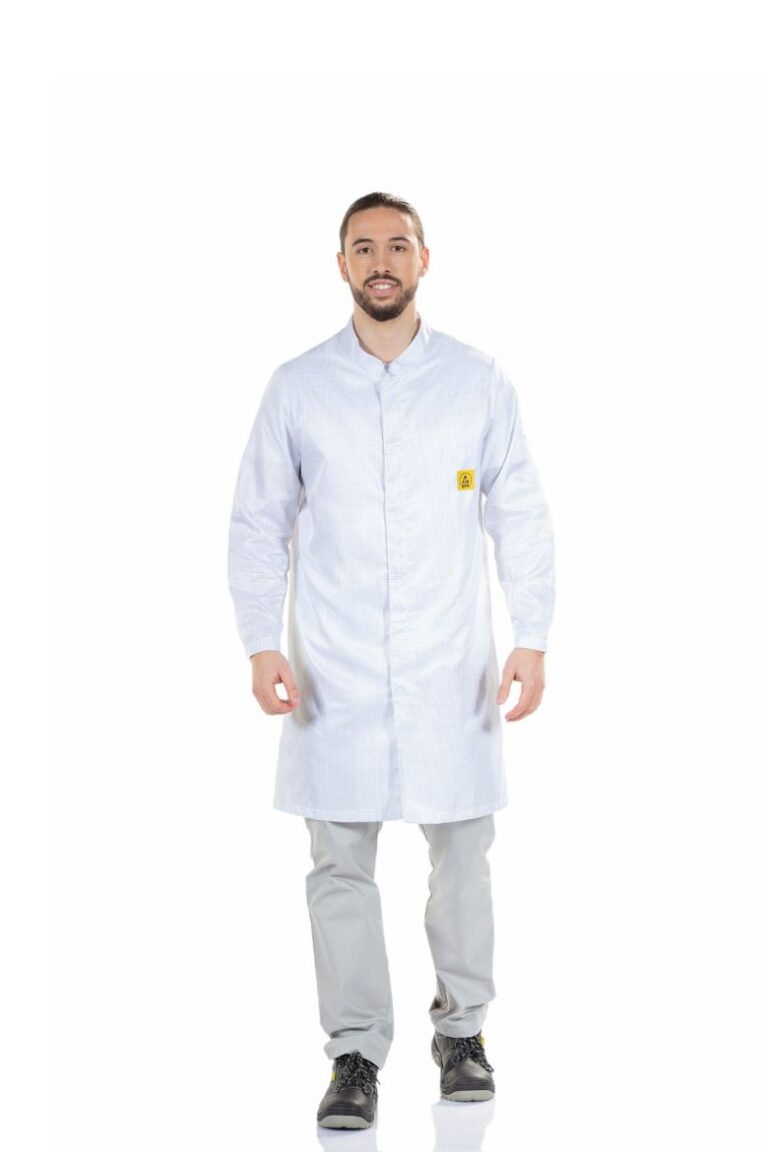

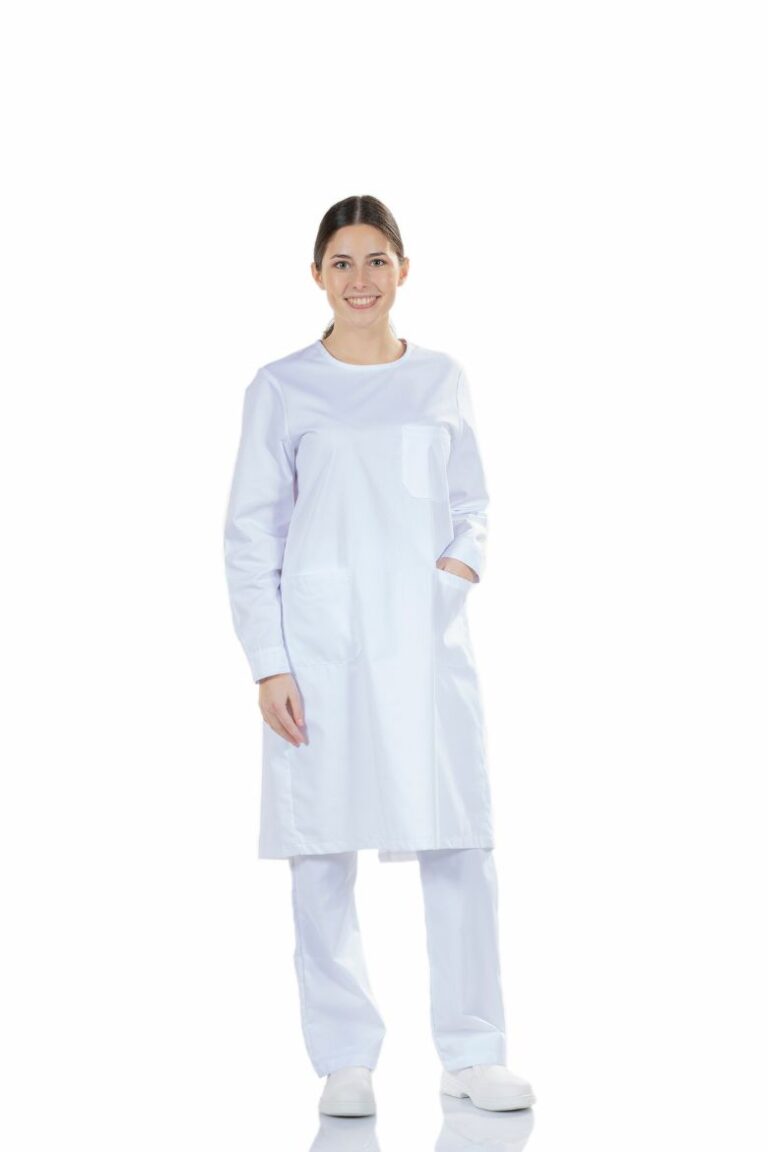
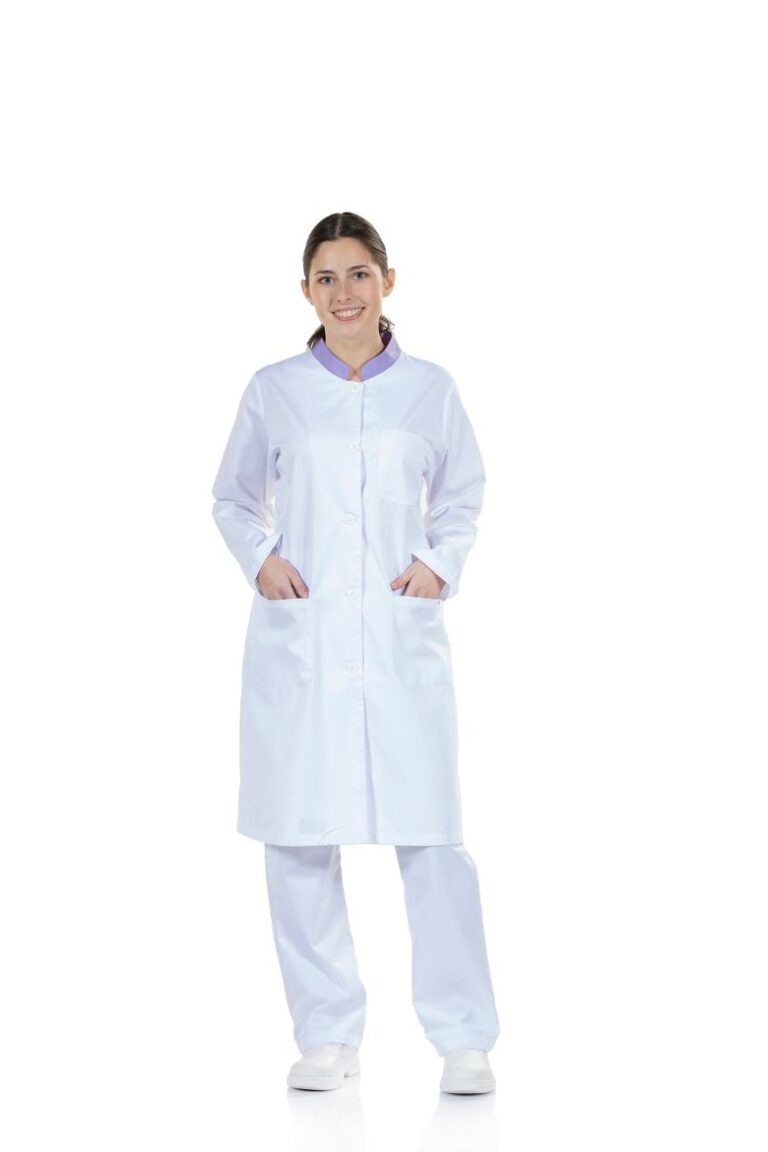
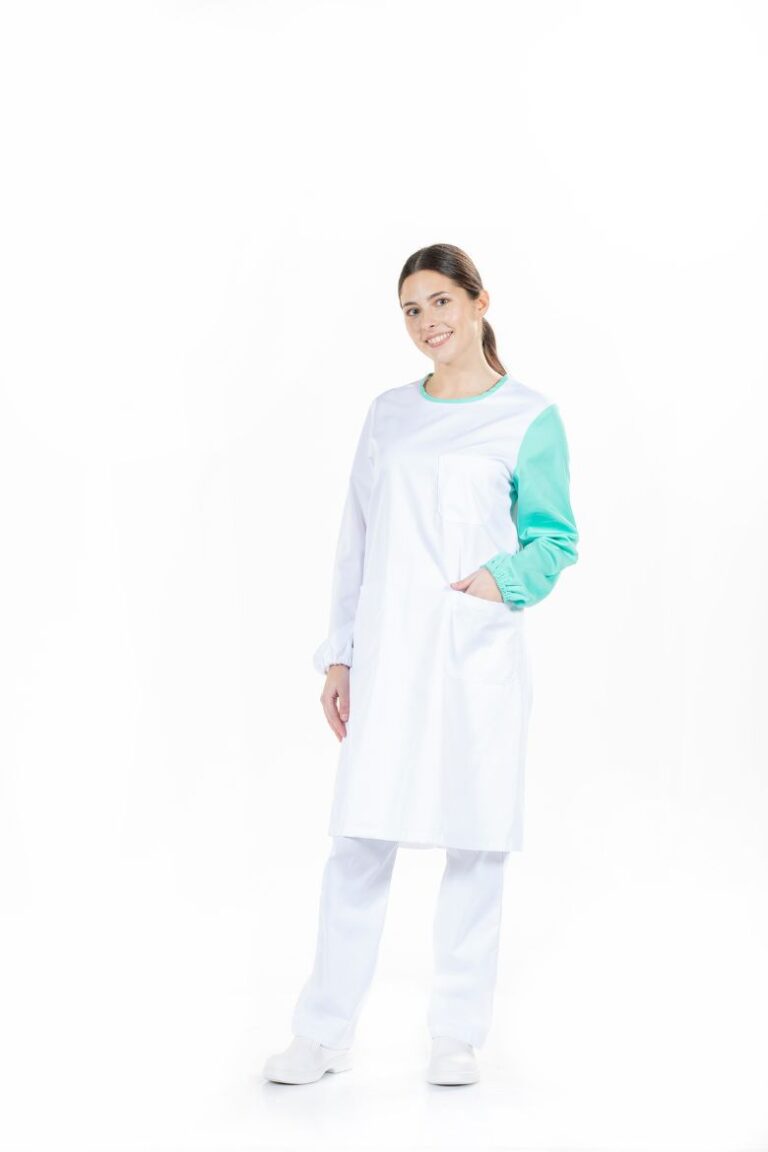
Products with visible prices are those that can be purchased immediately, online, without requiring minimum purchase quantities. This means you can explore our variety of options and purchase exactly what you need, with complete transparency regarding costs and the Professional Apparel model. On the other hand, products without a listed price function as a portfolio of possibilities. These items are highly customizable and can be tailored to each customer's individual specifications. To ensure quality and meet expectations, these products have a minimum order quantity and are subject to a custom quote process.
A laboratory coat is a protective garment worn by professionals working in laboratory environments or handling hazardous substances. Its main function is to protect the wearer and the work environment from toxic or dangerous substances, as well as to prevent sample contamination. Laboratory coats are typically made from durable materials, such as polyester or cotton, which are easy to wash and can be sterilized. They are designed to cover the wearer's body and are worn over regular clothing. This helps prevent sample contamination from dust, hair, or other debris that may be present on the wearer’s clothing. Additionally, laboratory coats are easily identifiable by their color and style, which helps to distinguish laboratory professionals from other individuals present in the workplace. This helps ensure the safety of users and prevents unauthorized individuals from accessing restricted areas of the laboratory. In summary, the laboratory coat is a crucial piece of personal protective equipment (PPE) in laboratory settings. It helps protect users and the work environment from hazardous substances, prevents sample contamination, and contributes to the overall safety of everyone involved in the work process.
Laboratory coats are usually white for several practical and safety reasons. Firstly, the white color is neutral and allows users to clearly see any dirt or stains on the surface of the coat. This is important because laboratory coats must always be clean and free of contamination to avoid introducing external elements into experiments or analyses. Additionally, white is a common color in laboratory environments because it is associated with sterility and cleanliness, which is crucial for ensuring a safe and contamination-free environment. Another reason for choosing white is that it reflects light, which can help keep the wearer cool and comfortable in a hot or well-lit environment. White is also considered less offensive than other colors, which is important in work settings where appearance may be a factor. Lastly, the white color makes it easy to identify a laboratory coat, helping to avoid confusion with other clothing used in different areas. However, there are also laboratory coats in other colors, especially in workplaces where it's necessary to distinguish between different teams or areas. Overall, the choice of laboratory coat color is based on the specific needs of the work environment and the safety standards required for each type of activity.
Laboratory coats are workwear items used by professionals in laboratories, such as chemists, biologists, doctors, and other specialists who handle chemicals or hazardous materials. They are designed to protect the wearer from toxic or dangerous substances in the workplace and to prevent contamination of samples.
On this page, we will discuss the benefits of laboratory coats and who can wear them.
Advantages of Laboratory Coats
Protection Against Hazardous Substances
Laboratory coats are designed to protect the wearer from chemicals or hazardous materials that may be present in the workplace. They are made from chemical-resistant materials such as cotton, polyester, nylon, or blends of these materials
Prevents sample contamination
Laboratory coats also help prevent sample contamination. They are used to cover the wearer’s clothing, preventing hair, dust, or other particles from being transferred to the samples being studied
Easy to clean
Laboratory coats are easy to clean. They can be machine-washed or hand-washed, depending on the material. Additionally, many coats can be sterilized, ensuring that there is no cross-contamination between samples
Comfortable
Laboratory coats are designed to be comfortable. They are loose enough to allow for movement, and feature long sleeves to protect the arms. Many coats also have pockets, enabling the wearer to carry small equipment or samples
Easy Identification
These coats are easily identifiable. They are usually white or light blue, allowing professionals to be easily recognized in the workplace. Additionally, many coats feature the wearer’s name or the organization’s logo.
Who can wear this type of professional uniform?
Laboratory coats are used by a wide range of professionals, including chemists, biologists, doctors, pharmacists, laboratory technicians, and others. Here are some examples of where laboratory coats are used:
Research Laboratories
Laboratory coats are used in research laboratories to protect users and prevent sample contamination. They are worn by scientists, researchers, laboratory technicians, and students..
Chemical and Pharmaceutical Industries
Laboratory coats are used in chemical and pharmaceutical industries to protect workers from hazardous substances. They are worn by chemists, pharmacists, laboratory technicians, and other employees involved in the production of chemical and pharmaceutical products..
Hospitals and Clinics
Laboratory coats are used in hospitals and clinics to protect healthcare professionals and patients from cross-contamination. They are worn by doctors, nurses, laboratory technicians, and other healthcare professionals
Food Industry
Laboratory coats are used in the food industry to prevent contamination of food by unwanted particles. They are worn by workers involved in the production, packaging, and transportation of food
Educational Institutions
Laboratory coats are used in educational institutions to protect students and teachers during practical lessons. They are worn in science, biology, chemistry, and other subjects that involve handling chemicals or hazardous materials.
Types of Laboratory Coats
There are different types of laboratory coats, each with its own characteristics and specific uses. Here are some examples:
Long-Sleeve Lab Coat
The long-sleeve lab coat is the most common type of laboratory coat. It features long sleeves and is typically open in the front, making it easy for the wearer to put on and take off. It is used to protect the wearer’s arms and to prevent sample contamination.
Long Lab Coat
The long lab coat is a longer version of the laboratory coat. It typically extends to the knees and features a front opening, making it easy for the wearer to put on and take off. It is used to protect the wearer and prevent sample contamination.
Disposable Lab Coat
The disposable lab coat is used in environments where cross-contamination is a concern. It is worn once and then discarded after use, ensuring that there is no contamination between samples or users.
Fardamento à sua medida.
Descubra as nossas
soluções.
Fardamento à sua medida.
Descubra as nossas
soluções.
To subscribe, please enter your e-mail address and click on “Subscribe”.
You can stop receiving our communications by clicking on the link in the footer of any of our newsletters.
Para efetuar a sua subscrição, por favor insira o seu e-mail e clique em “Subscrever”.
Poderá parar de receber as nossas comunicações, ao clicar no link para o efeito encontrado nos rodapés de qualquer uma das nossas Newsletters.
UNIFARDAS® supports Espaço T, which is an inclusive organisation, of all and for all, and our common goal is to increase employment opportunities for young people with special needs and/or who, for some reason, have been excluded from the labour market.
We work hard to provide safe working conditions by going beyond the imposed and mandatory minimums.
We support, nurture and offer continuous training programmes aimed at improving skills.
At UNIFARDAS® we keep up to date with the latest technologies and innovations that can optimise our production process making it more efficient and close to zero waste.
UNIFARDAS® is a partner of Espaço T, an inclusive organisation, of all and for all, with the common goal of increasing employment opportunities for young people with special needs and/or who, for some reason, have been excluded from the labour market. In this organisation, immigrants will also find a support network in finding work and housing.
In addition to the sustainable path we have been taking throughout our production and supply chain, UNIFARDAS® participates, supports and organises a beach clean-up every year after the bathing season, in partnership with World Clean-up Day. We are also partners of Seaqual, an entity that, together with some other partners, promotes the collection of ocean waste and its transformation into upcycled marine plastic that will then be used in the production of fabric and other sustainable products.
In addition to the sustainable path we have been taking throughout our production and supply chain, UNIFARDAS® participates, supports and organises a beach clean-up every year after the bathing season, in partnership with World Clean-up Day. We are also partners of Seaqual, an entity that, together with some other partners, promotes the collection of ocean waste and its transformation into upcycled marine plastic that will then be used in the production of fabric and other sustainable products.